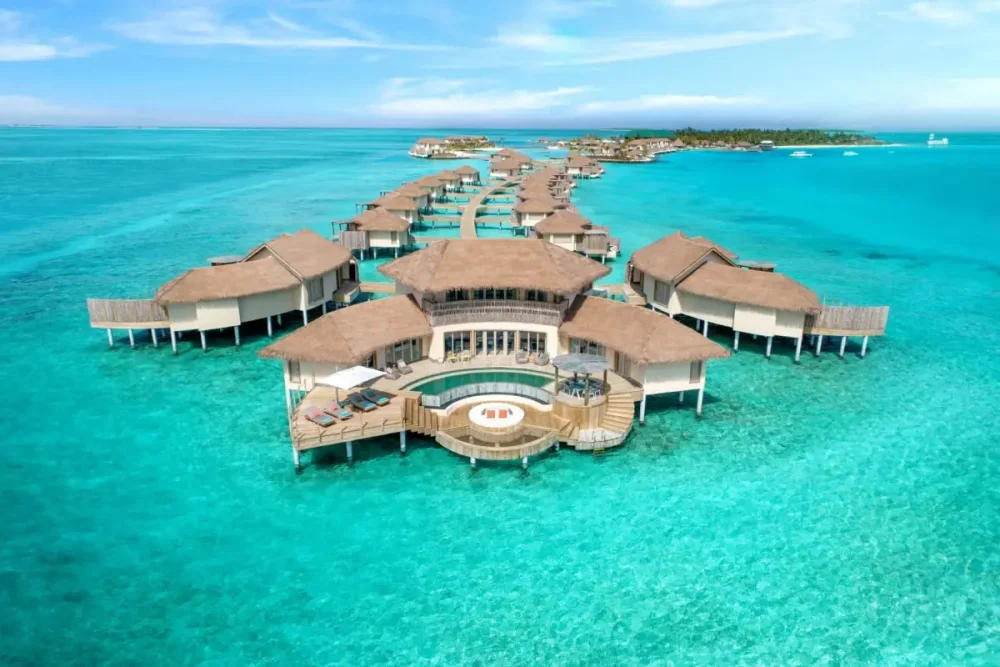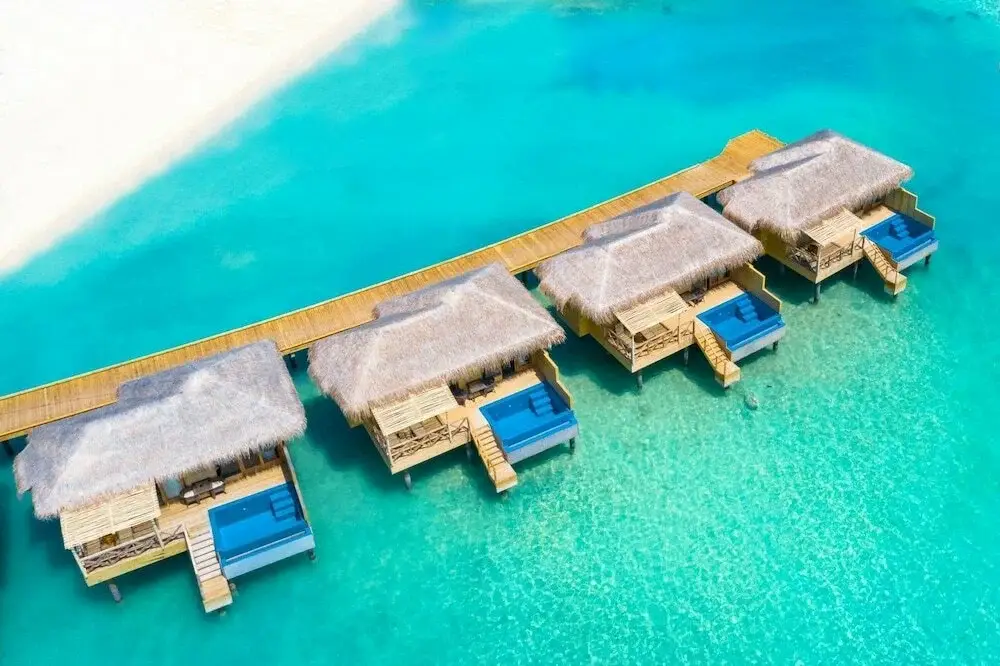The Maldives are synonymous with luxurious and expensive vacations, but the reason for such high prices lies not only in glamour. So why are the Maldives so expensive? Imagine an archipelago of 1196 islands scattered across the equator, like building blocks on the floor. Each villa, each resort is located far apart from each other, making their logistics extremely complex and costly. Without a centralized system, even a simple delivery of a banana to one of the islands turns into a real special operation involving boats, seaplanes, and significant time and costs.
Vacation in the Maldives: Where Does the Price Come From
Every toothbrush, every concrete slab for a villa—all arrive by ocean or air. The islands do not produce anything on a mass scale. Importation literally shapes the price from the first breath at Velana Airport. A container from Sri Lanka or Dubai increases the cost of any item by 2–4 times.

The pricing in the Maldives always starts with logistics. It’s no coincidence that a bottle of mineral water in a hotel costs $10: delivery, storage, cooling, and the markup of a premium brand—all included.
Why Are the Maldives So Expensive: Lack of Rivers and Lakes
There are no rivers and lakes in the Maldives. Only the ocean. Freshwater is the result of round-the-clock desalination. Desalination plants run on diesel generators consuming thousands of liters of fuel monthly. Electricity doesn’t come from the socket but from a long journey: diesel arrives on a barge, then powers the generators, which in turn power the air conditioners, refrigerators, Wi-Fi, and even pool heating.
While other resorts calculate travel budgets in euros, Maldivian resorts convert every kilowatt and liter into dollars. Hence, the final cost of a Maldives vacation: electricity + water + logistics = expensive.
Island Resorts: Luxury with Delivery
Here, every hotel is a separate island. This format creates exclusivity but also increases costs: staff, building materials, equipment, products, service. Any malfunction requires a helicopter, boats, or drones—there is no subway or delivery trucks here.
What luxury vacation in the Maldives includes:
- Villas with private overwater pools.
- Personal butler in Dior shorts.
- Breakfasts overlooking the lagoon with oysters.
- Spa treatments with cosmetics produced in a Zurich laboratory.
- Private cinemas under the stars.
Such luxury vacations are not just expensive—they represent technology, engineering, transportation, infrastructure, and time.
Nature Worth Its Weight in Gold
Maldivian reefs and biodiversity are fragile resources requiring protection. Erosion caused by rising sea levels takes centimeters off the islands’ shores every year. Resorts invest millions in stabilizing coastlines, installing breakwaters, and creating artificial beaches. This doesn’t bring dividends but adds zeros to the room price.
Yet, tourism in the Maldives depends on the beauty of the water, underwater world, lagoon transparency, and harmony with nature. Spoiling the view with plastic pipes or gray structures is an unacceptable luxury. That’s why every element is built here to blend with the landscape, manually and in compliance with strict standards.
When Luxury Is Not Just Show, But Necessity
Premium service in the Maldives starts with the approach to the island. At the airport, a staff member greets you, escorts you to a private terminal, then a seaplane with the hotel’s logo. In 45 minutes—landing on water, a colorful welcome drink, a personal butler, 200 square meters of private space, and complete autonomy.
The cost of vacation here doesn’t just include experiences—you can’t put a price on them. But every dollar there reflects investments, not just show.
What Else Makes the Maldives So Expensive?
Every villa on the islands is designed considering resistance to humidity, salt, wind, and potential floods. They use treated wood, stainless steel reinforcement, glass panels with UV protection. Even the palm leaf roofs are treated with special anti-mold compounds. Architecture becomes not just aesthetics but an engineering challenge with an increased budget.
This approach reflects not luxury for luxury’s sake but the necessity to extend the buildings’ service life in an aggressive environment. Hence, the cost increase, especially on islands with high humidity levels and seasonal floods.
Pros and Cons of Vacationing in the Maldives
The elite archipelago offers not just a vacation but a format of secluded island living with control over every moment. However, such isolation requires compromises and expenses.
Pros:
- Exclusivity: 1 hotel—1 island.
- Nature: 26 atolls, 1196 islands, over 200 fish species on the reefs.
- Service: up to 5 staff per guest.
- Safety: closed area, full control.
- Weather: stable year-round.
Cons:
- Price: from $5000 for 7 days in a modest hotel.
- Complex logistics: flights with layovers, transfer by seaplane.
- Lack of urban entertainment: all entertainment is within the hotel grounds.
- Dependency on supplies: import disruptions can affect menus and services.
- Coastal erosion and climate risks.
The balance of pros and cons depends directly on the vacationer’s preferences: some seek civilization, others seek tranquility. The Maldives create conditions where silence is valued far above the noise of a metropolis.

Is It Worth Flying When “Expensive” Is a Filter, Not a Con?
Traveling to the Maldives is not just an expensive vacation. It’s an investment in a unique experience that requires effort, technology, and care for nature. Here, you are not just a hotel guest but a part of a fragile ecosystem.
The answer to whether it’s worth flying to the Maldives is not in the price. It manifests in those unique moments when at sunset, a shark silently glides beneath the glass floor of your villa, and in your glass—a perfectly chilled Chardonnay, brought here from thousands of kilometers away. These are the priceless experiences for which such a journey is made.
 en
en  ar
ar  de
de  es
es  fr
fr  nl
nl  hi
hi  it
it  pt
pt  el
el 










